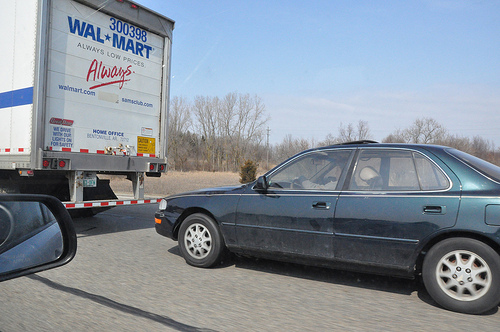
After a long and hot summer a lot of motor oil and transmission fluid have piles up on our 580 and 880 freeways near San Leandro, CA. People do not change or check the thread of their tires prior to rainy season. Either they get busy or just simply lazy. With recent heavy rain all of this motor oil and transmission fluid turns freeway into an ice skating rink. Many just don’t keep the distance or simply being careless. Sudden traffic conditions and abrupt stops shortens breaking distance during these rainy seasons. As a result many accidents take place in San Leandro, CA of 580 880 and 237 Freeways. These accidents cause many soft tissue injuries such as lower back sprain and strain injuries as well as cervical spine or neck sprain strain injuries.
What is Back sprain/strain
The back is a complex structure of bone and muscle, supported by cartilage, tendons and ligaments, and fed by a network of blood vessels and nerves. The back—especially the lumbar, or lower back—bears much of the body’s weight during walking, running, lifting and other activities. It makes sense, then, that injuries to the lower back—such as strains and sprains—are common.
What is a strain?
A strain is an injury to either a muscle or tendon. Tendons are the tough, fibrous bands of tissue that connect muscle to bone. With a back strain, the muscles and tendons that support the spine are twisted, pulled or torn.
What is a sprain?
A sprain is the stretching or tearing of a ligament. Ligaments are the fibrous bands of tissue that connect two or more bones at a joint and prevent excessive movement of the joint.
What is a neck sprain?
A neck sprain is a stretched ligament or muscle in the neck. A neck sprain may occur without any obvious injury but sometimes it may be caused by a sudden impact with an object. An impact may force the neck to quickly extend beyond its normal range, and then snap back forcefully. This is commonly called a whiplash injury. Rear-end car accidents, head jerking during amusement park rides, or being kicked are the most common forms of impact that may cause a neck sprain.
You will have neck pain that worsens with movement. Sometimes this pain will not appear until a full day or two after the event that caused it. You will most likely have neck stiffness that hinders your ability to move your neck. The back of your head might hurt. You may also have pain in the shoulders or upper back. Other symptoms that may happen with a neck sprain include:
- Dizziness
- Ringing in the ears
- Fatigue
- Patchy numbness in the hands or arms
If you notice these symptoms after a whiplash-type incident, see a doctor for an evaluation to rule out a more serious problem, such as damage to the spinal cord. Arm or leg weakness, difficulty walking, and an inability to control the bladder or bowels are signs of spinal cord injury. If you have immediate neck pain after the incident, go to an emergency room.
